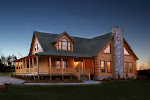
It's got to get worse before it will get better...It's cliche, but in our housing market all too true. For some time I've thought and been writing about two possible outcomes in the Salt Lake City market. Either we grow our way out of our slow down, or prices drop dramatically from recent levels.
Growth does not appear to be our savior, as I highlighted in a previous post Utah job growth has not held up as predicted. And, as job losses are heavily caused by the depressed real estate market and plummeting contruction, it's a double whammy. It looks like we'll take the more painful route in clearing out HISTORICALLY HIGH house inventories and getting our market healthy again with SIGNIFICANT drops in home prices valley wide. An INCREASE in foreclosures is a sad but likely necessary reality to help bloated inventories.
The following article is from September 5th, Bloomberg Online.
Sept. 5 (Bloomberg) -- Foreclosures accelerated to the fastest pace in almost three decades during the second quarter as interest rates increased and home values fell, prompting more Americans to walk away from homes they couldn't refinance or sell.
New foreclosures increased to 1.19 percent, rising above 1 percent for the first time in the survey's 29 years, the Mortgage Bankers Association said in a report today. The total inventory of homes in foreclosure reached 2.75 percent, almost tripling since the five-year housing boom ended in 2005. The share of loans with one or more payments overdue rose to a seasonally adjusted 6.41 percent of all mortgages, an all-time high, from 6.35 percent in the first quarter.
Tumbling home prices are making it difficult for even the most creditworthy owners with adjustable-rate mortgages to sell or get a new loan as their financing costs rise, said Jay Brinkmann, MBA's chief economist. Prime ARMs accounted for 23 percent of new foreclosures and subprime ARMs were 36 percent, he said.
``People chose the lowest payment option to get into some of the very expensive housing markets and now that prices are coming way down, they can't sell and they can't afford the higher payments,'' Brinkmann said in an interview.
The three-year-old housing slump has slowed growth of the world's largest economy, caused more than half a trillion dollars of losses at banks such as Citigroup Inc. and UBS AG, and crimped earnings for companies such as Home Depot Inc. and Lowe's Cos. that rely on home purchases to fuel demand.
Economic Growth
The drop in home sales and values, along with tighter credit conditions and higher energy costs, probably will ``weigh on economic growth over the next few quarters,'' Federal Reserve policy makers said Aug. 5 when they decided to hold their benchmark rate at 2 percent. The central bankers cut the rate seven times in the last year in an attempt to avert a U.S. recession.
The Fed probably will keep the rate level for the next few months, according to the price of Fed funds futures. There's an 81 percent chance of no change at the Sept. 16 meeting and a 75 percent chance of no action at the Oct. 29 meeting, they indicate.
Foreclosures started on prime mortgages rose to 0.67 percent from 0.54 percent and the foreclosure inventory increased to 1.42 percent from 1.22 percent, the report said. The share of seriously delinquent prime mortgages was 2.35 percent, up from 1.99 percent.
Prime Mortgages
The share of new foreclosures on prime ARMs was 1.82 percent, triple the 0.58 percent in the year-earlier quarter, and the total foreclosure inventory was 4.33 percent, up from 1.29 percent, the report said. The share of seriously delinquent prime ARMs was 6.78 percent, rising from 2.02 percent a year ago.
New foreclosures on subprime loans rose to 4.7 percent from 4.06 percent in the first quarter, according to the report. The total foreclosure inventory increased to 11.81 percent from 10.74 percent and the so-called seriously delinquent share of loans that are 90 days or more overdue rose to 17.85 from 16.42 percent.
Existing home sales fell to a 10-year low in the second quarter and the median price for a single-family house dropped 7.6 percent, according to the National Association of Realtors in Chicago.
About 75 percent of U.S. banks surveyed indicated they tightened standards on prime mortgages, up from 60 percent in the previous survey, the Federal Reserve said on Aug. 11.
The Mortgage Bankers report is based on a survey of 45.4 million loans by mortgage companies, commercial banks, thrifts, credit unions and other financial institutions.


No comments:
Post a Comment